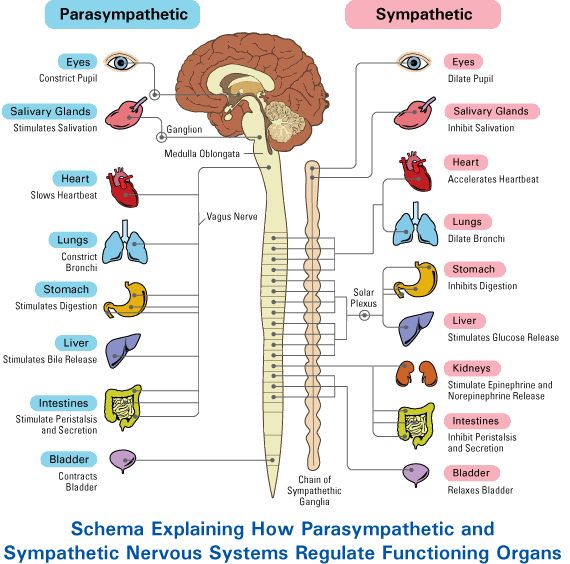Sympathetic and Parasympathetic Nervous System
To Understand the body is to Understand the Mind
Understanding the Sympathetic and Parasympathetic Nervous System
Sympathetic and parasympathetic nervous system flexibility is key to maintaining emotional and physical wellbeing. The nervous system is involved in nearly every aspect of our health and guides everyday activities such as waking up, breathing; and complex processes such as thinking, reading, remembering, and generating emotions. Most commonly it is known to determine our stress response and recovery but it is involved so many of our body/mind processes beyond that. Understanding how your nervous system works is key to developing good health and wellbeing strategies.
The Sympathetic and parasympathetic nervous system controls:
- Brain growth and development
- Sensations (such as touch or hearing)
- Perception (interpreting sensory information)
- Thought and emotions
- Learning and memory
- Movement, balance, and coordination
- Sleep
- Healing and rehabilitation
- Stress and the body’s responses to stress
- Ageing
- Breathing and heartbeat
- Body temperature
- Hunger, thirst, and digestion
- reproductive health, and fertility

Many of the problems people seek help for relate to or are accompanied by issues in the above areas. This means that understanding how to work with the sympathetic and parasympathetic nervous system branches is key to guiding self care routines and recovery strategies for optimum health and wellbeing. It is one of the three main Pillars to the BodyMindBrain Approach. Many of the people I work with need help finding strategies to tolerate and manage the feelings that come with stress and sympathetic arousal and better methods to encourage their nervous system with parasympathetic, calming and balancing responses. The best strategy for health and wellbeing is one that helps us transition with greater ease and flexibility between these natural bodily responses without operating too frequently in one over the other.
What is the Sympathetic and Parasympathetic Nervous System?
We have two main components to our nervous system, one that is under our conscious control (e.g. moving your body) and another that works automatically on our behalf (e.g. controlling heart rate). The automatic part (ANS) is responsible for all bodily processes that occur without conscious control, including our emotional expression, and helps us mobilise energy with our sympathetic nervous system or conserve energy through our parasympathetic nervous system. The nervous system and brain work together to make sense of what it happening inside the body and outside of the body to ensure that we adapt and respond as needed in order to survive.
- The sympathetic nervous system is associated with activated states such as the fight or flight response and is designed to energise and mobilise the body
- The parasympathetic system is associated with deactivated states such as rest, relaxation, digestion, and recovery after stress as well as freeze states
The sympathetic and parasympathetic nervous systems are meant to work together in a balanced way. When the nervous system is working adaptively we will find ourselves ‘dancing’ between these systems, back and forth with activating and deactivating states, throughout the day. If it has lost its flexibility then you may feel stuck in over-active, alert states like anxiety and physical tension or de-activated, unmotivated, foggy or flat states.
What Influences Activation of the Nervous System Branches?
As previously mentioned the brain and nervous system work together to make sense of what is happening inside and outside of the body to ensure effective adaptation and survival. I like to think of the body, mind and brain as representing a mass communication device, both transmitting and receiving information to inform conscious and unconscious responses. With survival as the the most fundamental aspect of our human programming, we are designed to adapt by heeding the demands of the body, rising to challenges inside and outside of us, avoiding threat and discomfort and then to drop back down to rest, safety and recovery.
Influences on the branches include many factors including: genetics, personality, tolerance of uncertainty, physical demand, competition for needed resources, illness, lack of safe and comfortable downtime, stress, lack of relationships that offer emotional safety, good nutrition, functional mobility and breathing and oxidative stress.
When it comes to the parasympathetic nervous system we need to talk about the Vagus Nerve which is its main component. I have made this a subject for another page because it deserves to be understood in much more detail in its own right. Understanding the Vagus Nerve and how to influence it is very helpful in helping learn to balance the very normal and high amount fo stress that life often involves. Please read on here about The Vagus Nerve.
